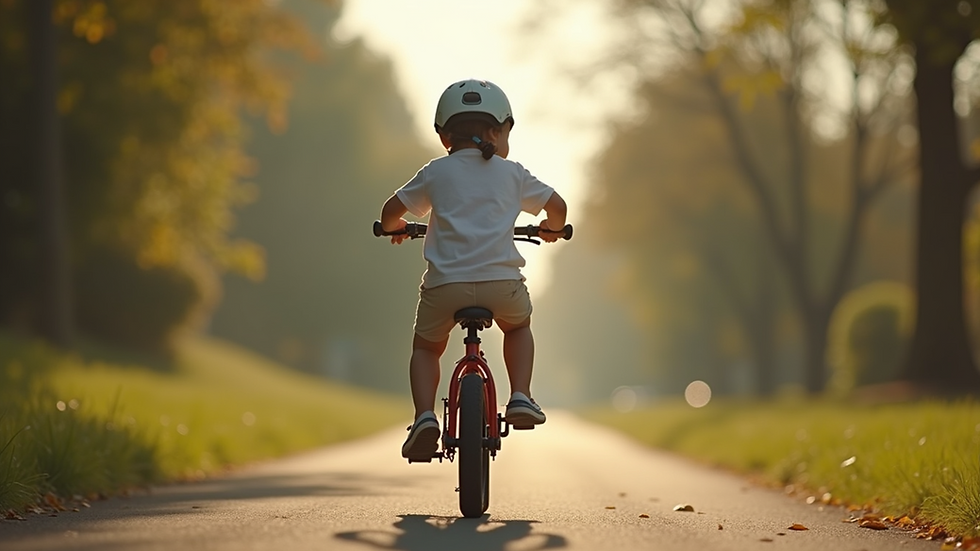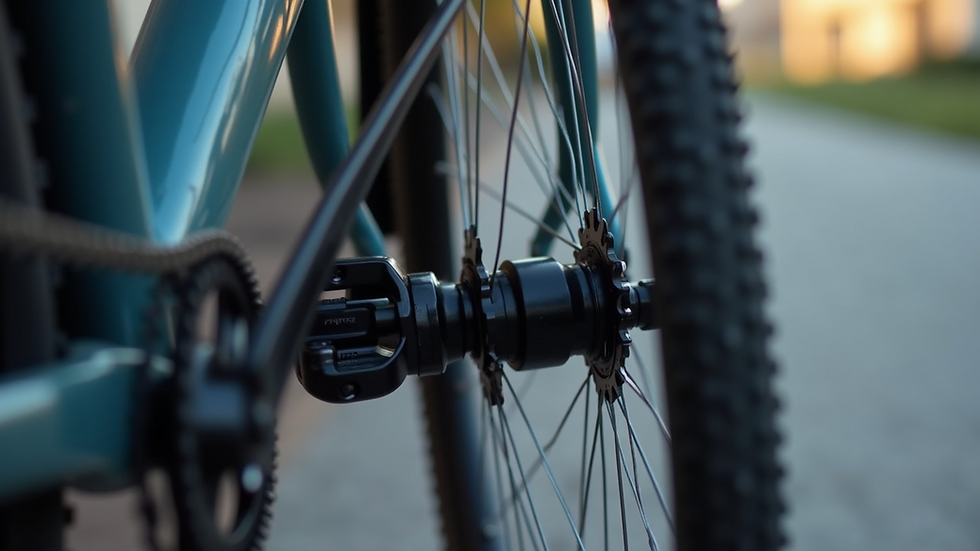Choosing the Perfect Bike Size for Your Child
- Harri Prytherch
- Jul 21
- 4 min read
Finding the right bike for your child is crucial for their safety and enjoyment while cycling. A bike that fits well will allow your child to ride comfortably and confidently. In this blog post, we’ll explore the essential aspects of selecting the perfect bike size for your child, ensuring they have a positive biking experience.
Kids Bike Sizing Tips
When it comes to buying a bike for a child, size matters. A bike that is too large can be dangerous and difficult to handle, while a bike that is too small can hinder growth and development. The key is to measure your child accurately and understand the specifications that go into bike sizing.
Measuring Your Child's Height: Start by measuring your child's height. This will help you determine the appropriate frame size for their bike. You can use a tape measure or a ruler against a wall to get their height accurately.
Inseam Measurement: Next, measure your child's inseam, which is the distance from the ground to their crotch while standing straight. This measurement is crucial for selecting the right bike size. A simple way to measure inseam is to have your child stand barefoot with their feet against a wall, then place a book between their legs to mimic a bike seat and measure the distance from the floor.
Understanding Wheel Sizes: Bikes come in various wheel sizes, and generally, the wheel size correlates with the child's height. For instance:
12-inch wheels are suited for kids aged 2-4 years (height 36-42 inches).
16-inch wheels are for ages 4-6 years (height 42-48 inches).
20-inch wheels fit children aged 5-8 years (height 45-54 inches).
24-inch wheels are for bike riders from 7-11 years (height 50-60 inches).
26-inch wheels are typically for kids aged 11 and older (height 56 inches and above).
The size will vary based on brands and models, so always check specific size charts from manufacturers.

The Importance of Bike Fit
The right bike fit goes beyond just height. Ensuring your child can comfortably reach the handlebars and pedals is vital as well. Here are some considerations for achieving proper fit:
Seat Height: The bike's seat should adjust so that when your child sits on it, their feet can touch the ground. This allows them to stop the bike safely. As a rule of thumb, when seated, your child's leg should have a slight bend at the knee when the pedal is at its lowest position.
Reach to Handlebars: Your child should be able to reach the handlebars comfortably. If they have to stretch excessively or can’t quite reach, it may lead to discomfort and affect their control of the bike.
Standover Height: When your child stands over the bike with both feet flat on the ground, there should be 1-2 inches of clearance between the bike and their body. This is important for safely mounting and dismounting the bike.

What Height Does a 26 Inch Bike Fit?
A 26-inch bike is generally designed for taller children, typically those whose height ranges from about 5’0” to 5’6”. However, it is crucial to consider that comfort and control should be prioritized over age. If your child falls outside the typical range but can handle the bike, it might still be a good choice. This size is often ideal for young teens and can serve them well into their later teenage years, making it a great investment.
When considering a bike for a child who may be on the smaller side but fits comfortably on a 26-inch bike, make sure to adjust the seat height properly. If they cannot reach the pedals or are unable to stop safely, it may not be suitable for them, regardless of height.

Growth Spurts and Future Sizing
Children grow quickly, and their needs for a bike will change over time. Here are tips to keep in mind when shopping for a bike that accounts for growth spurts:
Adjustability: Look for bikes with adjustable seats and handlebars. This ensures you can modify the bike as your child grows, prolonging the usability of the bike.
Durability: Consider investing in a sturdy bike that can withstand rough terrains rather than one that is too lightweight. This will allow them to use it for multiple years without too much wear and tear.
Buying Used: If your child is in a growth phase, consider buying a second-hand bike. Kids outgrow their bikes quickly, and you can often find bikes that are lightly used and still in great condition.
By understanding the bike size proportions and the recommendations from a reputable bike size guide, you can make a more informed decision when purchasing a bike for your little one.
Final Thoughts on Choosing a Bike
When selecting the perfect bike size for your child, remember to prioritize safety, comfort, and enjoyment. Always remember to involve your child in the decision-making process; let them test ride the bike before making a final choice.
A well-fitted bike will not only boost your child's confidence but also enhance their biking skills. Investing time in the sizing process will set them on the path to a lifetime of cycling enjoyment and active living.
Encourage them to explore outdoor biking adventures while ensuring they have the right size bike, taking into account their unique measurements and preferences. Happy cycling!
Comments